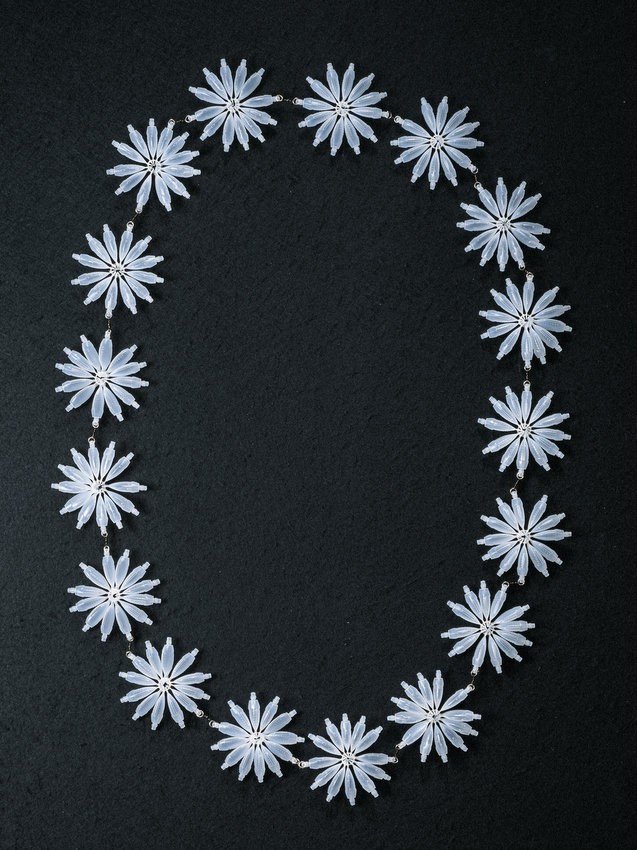We acknowledge the Traditional Owners of the land on which the Queensland Art Gallery | Gallery of Modern Art stands and recognise the creative contribution First Australians make to the art and culture of this country.

Niki Hastings-McFall / New Zealand b.1959 / Too much sushi II (from ‘Urban lei’ series) 2002 / Plastic soy sauce containers, sterling silver and black brass fishing swivels / Purchased 2002 / Collection: Queensland Art Gallery | Gallery of Modern Art / © Niki Hastings-McFall
Niki Hastings-McFallToo much sushi II 2002
On Display: QAG, Gallery 17
In Too much sushi II, 17 clusters of 12 plastic, fish-shaped soy sauce containers are connected by small sterling silver rings and linked together evenly by fishing swivels to resemble flowers or stars. The clusters are repeated and interconnected by the swivels and more sterling silver jump rings.
Jewellery and adornment have always played important roles in the historical trade networks of Oceania, and Niki Hastings-McFall has adopted the form of the lei in her work because it is a highly portable and valuable symbol of Pacific identity.
Drawing on traditional techniques, Too much sushi II celebrates the combination of multiple cultural influences occurring in urban centres. Her work is a unique blend of traditional Polynesian cultural practice and contemporary materials, formed through an exploration of her personal history.
Niki Hastings-McFall was born in 1959 in Auckland, New Zealand. She studied at the Manukau Institute of Technology in Auckland, receiving a Certificate in Contemporary Jewellery in 1993, a Diploma of Visual Arts in 1997, and a Bachelor of Visual Arts in 2000. She has exhibited widely in New Zealand and Australia, as well as internationally.
The artist underwent a dramatic process of self-reflection in the early 1990s, after meeting her Samoan father for the first time shortly before his death in 1992. Hastings-McFall’s mother is English and the resulting crossovers between her palangi (Samoan for non-indigenous) identity and the ongoing exploration of her Samoan heritage have greatly influenced her work. Driven to research her Pacific Islander heritage, Hastings-McFall’s subsequent works have focused on the junction between Pacific and non-Pacific traditions in contemporary New Zealand society.
Discussion Questions
1. Why do you think the artist chooses certain types of materials to make her jewellery?
2. What is the significance of the title of the artwork?
Activities
Experiment with recyclable materials, namely plastic cutlery and string, to make a wearable object. Begin by making a star or flower. Repeat your design and connect each element to create a wearable piece.